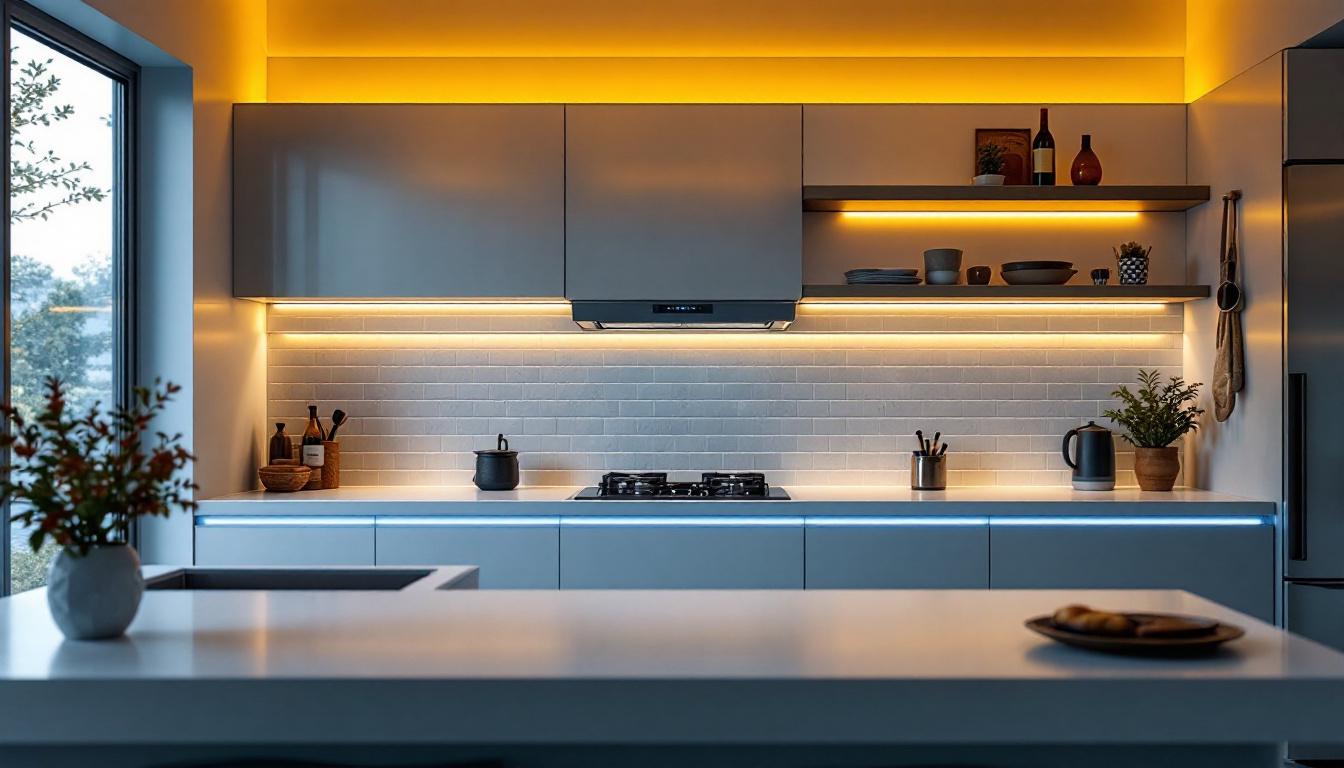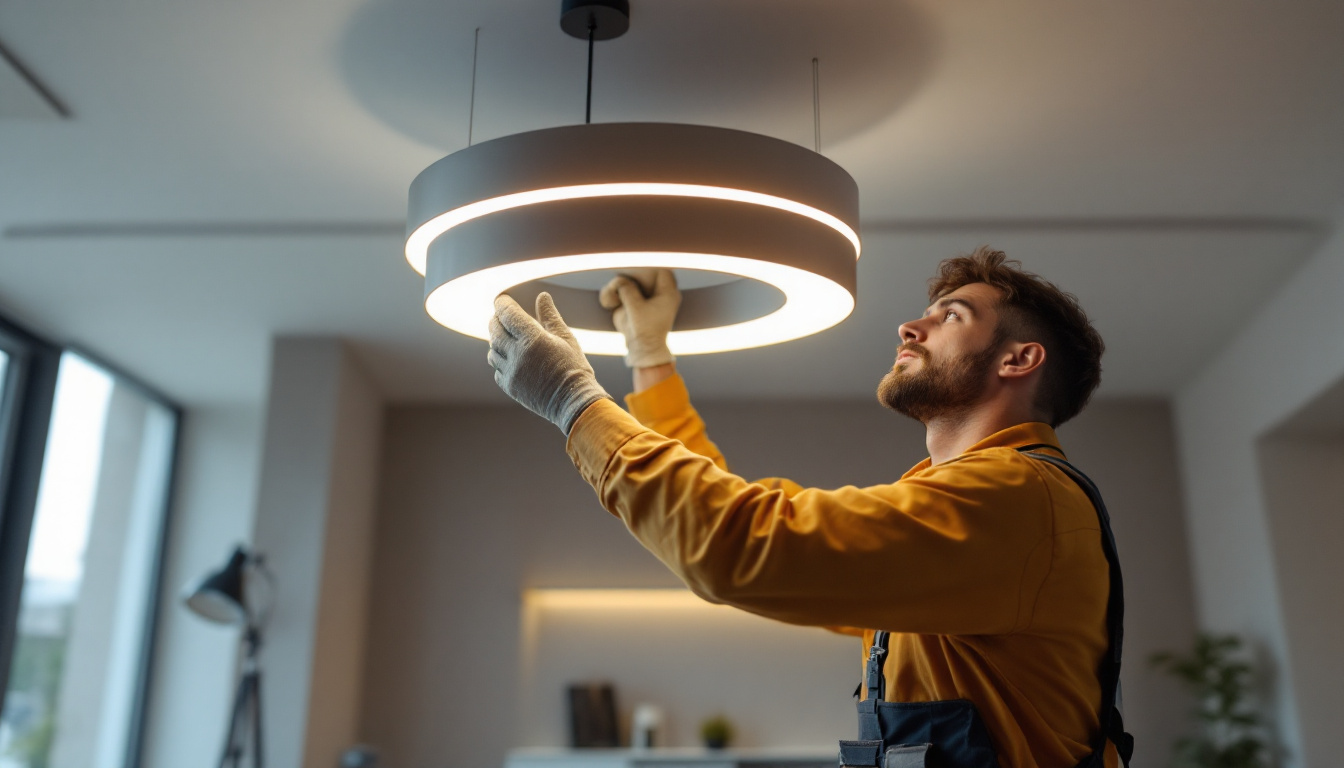
Strip LED lighting has emerged as a popular choice for modern kitchens, providing both functionality and aesthetic appeal. For lighting contractors, understanding the nuances of this lighting solution is essential to meet client expectations and deliver exceptional results. This article delves into the key points surrounding strip LED lighting, offering insights that can enhance project outcomes.
Strip LED lights, often referred to as LED tape or ribbon lights, consist of a flexible circuit board populated with light-emitting diodes. They are available in various lengths, colors, and brightness levels, making them incredibly versatile. Their design allows for easy installation in a multitude of settings, particularly in kitchens where space and style are crucial.
One of the primary advantages of strip LED lighting is its energy efficiency. Compared to traditional incandescent or fluorescent lighting, LEDs consume significantly less power while providing the same, if not better, illumination. This characteristic not only reduces energy costs but also contributes to a more sustainable approach to lighting. Additionally, the long lifespan of LED lights means that replacements are infrequent, further enhancing their cost-effectiveness over time.
Strip LED lights can be used in various applications within a kitchen, including under-cabinet lighting, accent lighting, and even as part of decorative elements. Their flexibility allows them to be installed in tight spaces, making them ideal for illuminating countertops, islands, and cabinetry.
Moreover, the ability to choose different color temperatures means that contractors can customize the ambiance of a kitchen. From warm white tones that create a cozy atmosphere to cooler shades that enhance a modern aesthetic, the options are virtually limitless. In addition to color temperature, many strip LED lights come with dimming capabilities, allowing homeowners to adjust the brightness according to their needs—whether it’s for a lively dinner party or a quiet evening meal. This adaptability not only enhances the functionality of the kitchen but also elevates the overall design, creating a space that is both practical and inviting.
Furthermore, the installation of strip LED lights can be integrated with smart home technology, allowing users to control their lighting remotely or through voice commands. This feature adds an extra layer of convenience, enabling homeowners to create specific lighting scenes or schedules that align with their daily routines. As kitchens continue to evolve into multifunctional spaces for cooking, dining, and entertaining, the integration of smart strip LED lighting can significantly enhance the user experience, making it a sought-after feature in contemporary kitchen designs.
When working with strip LED lighting in kitchens, there are several factors that contractors should consider to ensure optimal installation and performance. These considerations range from planning and design to installation techniques and safety measures.
Effective planning is crucial when incorporating strip LED lighting into kitchen designs. Contractors should work closely with clients to determine the desired effect and functionality of the lighting. This involves understanding the layout of the kitchen, the specific areas that require illumination, and the overall design theme.
Additionally, it is essential to consider the placement of outlets and power sources. Strip LED lights require a power supply, and careful planning ensures that these components are seamlessly integrated into the kitchen’s design without compromising aesthetics. The choice of color temperature is also a significant factor; warm white light can create a cozy atmosphere, while cool white light is more energizing and suitable for task-oriented areas such as countertops and cooking zones. Contractors should also discuss dimmability options with clients, as this feature can enhance the versatility of the lighting, allowing for adjustments based on the time of day or specific activities.
Proper installation techniques are vital for achieving the best results with strip LED lighting. The adhesive backing on many strip lights allows for straightforward application, but contractors should ensure that the surface is clean and dry for optimal adhesion. In some cases, additional mounting hardware may be necessary to secure the lights in place.
Furthermore, understanding how to connect multiple strips is essential for larger installations. Contractors should be familiar with the various connectors and power supplies available, ensuring that the entire system operates efficiently and safely. It’s also important to consider the heat dissipation of the LED strips; inadequate ventilation can lead to overheating, which may shorten the lifespan of the lights. Therefore, incorporating aluminum channels or heat sinks can be beneficial in maintaining optimal operating temperatures. Additionally, contractors should educate clients on the maintenance of their LED systems, including how to clean the strips and troubleshoot common issues, ensuring longevity and sustained performance.
Safety is a paramount concern when working with any electrical installation, and strip LED lighting is no exception. Contractors must adhere to local electrical codes and regulations to ensure compliance and safety for their clients.
Before installation, contractors should familiarize themselves with the electrical standards governing lighting installations in kitchens. This includes understanding the required wattage, voltage, and circuit load to prevent overloading and potential hazards.
Additionally, using high-quality components is essential. Low-quality strip lights may not only perform poorly but can also pose safety risks, including overheating or electrical failures. Investing in reputable products can significantly reduce these risks.
Kitchens are often exposed to moisture and heat, making it critical to choose strip LED lights that are rated for such environments. Contractors should look for products with appropriate IP ratings that indicate resistance to water and dust. This is particularly important for areas near sinks or cooking appliances where exposure to steam and spills is common.
Moreover, ensuring adequate ventilation around the lighting fixtures can prevent overheating, which is crucial for maintaining the longevity of the LEDs and the safety of the installation.
Beyond functionality, strip LED lighting offers significant opportunities for enhancing the aesthetic appeal of a kitchen. By strategically placing these lights, contractors can create visually stunning effects that elevate the overall design.
Strip LED lights can be used to create different moods within the kitchen. For instance, dimmable options allow homeowners to adjust the brightness according to the time of day or occasion. A well-lit kitchen can be inviting for family gatherings, while softer lighting can create a more intimate atmosphere for dinner parties.
Incorporating color-changing LEDs can further enhance this effect, allowing homeowners to customize their kitchen’s ambiance at the touch of a button. This feature is particularly appealing for those who enjoy hosting and want to create a dynamic environment.
Strip LED lighting is an excellent tool for highlighting architectural features within a kitchen. For example, installing lights along the edges of cabinets or shelves can draw attention to unique designs and create a sense of depth. This technique can also be used to illuminate artwork or decorative elements, adding layers of interest to the space.
Furthermore, using strip lights to accentuate the contours of countertops or islands can create a stunning visual effect, making these areas stand out as focal points in the kitchen.
While strip LED lighting offers numerous benefits, it is essential for contractors to communicate the cost implications to clients. Understanding the financial aspects can help clients make informed decisions about their lighting choices.
Strip LED lights may have a higher initial cost compared to traditional lighting options, but the long-term savings on energy bills can be significant. Contractors should educate clients about the efficiency of LEDs and how they can lead to reduced electricity costs over time.
Additionally, the longevity of strip LED lights means fewer replacements and maintenance costs, further enhancing their value proposition. Presenting these points can help justify the investment and encourage clients to opt for high-quality LED solutions.
When discussing costs, it is also important to factor in installation expenses. While strip LED lights are relatively easy to install, the complexity of the project can influence labor costs. Contractors should provide clients with a detailed estimate that outlines both material and labor costs, ensuring transparency throughout the process.
Offering different options, such as DIY installation versus professional installation, can also empower clients to make choices that align with their budget and comfort level.
The lighting industry is continuously evolving, and strip LED lighting is no exception. Staying informed about emerging trends can help contractors provide cutting-edge solutions to their clients.
Smart home technology is becoming increasingly popular, and integrating strip LED lighting with smart systems is a trend that contractors should embrace. This allows homeowners to control their lighting through mobile apps or voice commands, enhancing convenience and customization.
Moreover, smart strip lights can be programmed to change colors or brightness based on the time of day, creating a dynamic lighting experience that adapts to the homeowner’s needs.
As technology advances, new designs and features for strip LED lighting are emerging. For instance, some manufacturers are developing flexible strips that can be cut to custom lengths or designed to fit specific shapes, offering even greater versatility for contractors.
Additionally, advancements in color rendering and brightness levels are making it possible to achieve more vibrant and true-to-life colors, enhancing the overall aesthetic appeal of kitchens.
Strip LED lighting presents a wealth of opportunities for lighting contractors working in kitchen environments. By understanding the unique characteristics, installation techniques, and safety considerations associated with these lighting solutions, contractors can deliver exceptional results that meet client expectations.
Furthermore, by staying informed about trends and innovations in the industry, contractors can position themselves as knowledgeable professionals who provide valuable insights and solutions to their clients. Embracing strip LED lighting not only enhances the functionality and aesthetics of kitchens but also contributes to a more sustainable and energy-efficient future.
Ready to elevate your kitchen lighting projects with the best strip LED lighting on the market? Look no further than LumenWholesale, where we provide lighting contractors with spec-grade lighting products at unbeatable wholesale prices. Say goodbye to local distributor markups and hello to our extensive selection that meets the highest industry standards. With LumenWholesale, you’ll enjoy the convenience of bulk buying with free shipping, ensuring you get premium lighting at the best value — without any hidden fees. Make your next project shine with the quality, affordability, and convenience of Wholesale Lighting at the Best Value from LumenWholesale.

Discover essential tips and strategies to sidestep common pitfalls in lighting projects with LED up lighting.

Discover how new construction recessed lighting is revolutionizing the industry for lighting contractors.

Discover how floating ceiling lights are revolutionizing the lighting industry and becoming a game-changer for contractors.

Discover how recessed ceiling can lights can transform your lighting business.